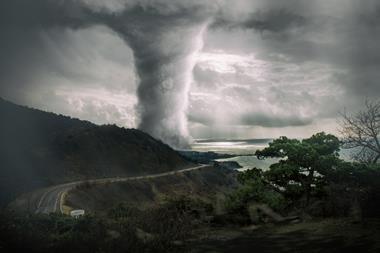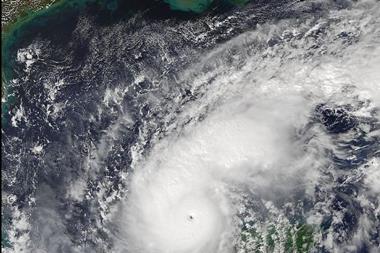A new high resolution model using geographical data and probability theory is helping insurers with their flood risk strategies. Agnete Berger reports
Recent large flood losses in the U.K. have led to a review of the terms under which the insurance industry offers flood protection.
As a consequence, an increasing number of insurance companies are using the results of models to differentiate locations by their exposure to flood risk and to charge accordingly.
Such models can also be used by corporate business to quantify the flood risk of individual business locations or of a portfolio of locations, and so assist in determining the strategy for managing and transferring that risk.
Large flood losses occur in the UK when several rivers over a widespread area flood during the same period and defences fail, such as occurred during the November 2000 flood, which caused a £1bn market loss. Similarly widespread, very large floods occurred in 1947, and in 1894 and 1875.
Such floods usually occur during the winter months when prolonged rain falls over saturated ground or melting snow leading to high flows in the major rivers. The risk of a large flood loss to a portfolio of corporate locations cannot be quantified simply by modelling the flood extent for a series of return periods on each river individually, as this does not capture the correlation of flooding in separate river systems during the same event.
The accumulation of risk in a portfolio can be quantified more accurately by using a stochastic event-based model. This predicts the full range of potential catastrophe flood eventsand estimates the probability of occurrence of each loss.
Losses on the major river floodplains drive high return period losses, but a significant proportion of loss also occurs away from the major floodplains from a number of sources.
Flooding on the floodplains of smaller rivers and streams may cause similar levels of damage to individual properties as flooding that occurs on the major river floodplains, and such locations are frequently not as well protected by defences.
In catchments of sharp elevation contrasts, flooding may occur directly from sheetflow, as excess water makes its way into the river systems, and drains overflow. In other areas, water tables may rise to reach the surface, resulting in groundwater flooding as springs arise along normally dry slopes and valleys.
The proportion of loss occurring outside the major floodplains varies according to the type of flood event, typically contributing 40%-60% of the loss from winter floods, and a larger proportion from floods occurring in the summer months, due to heavy rain.
Losses occurring off the major floodplains are especially important for low return period losses, which constitute a significant component of calculating the average annual loss.
The RMS flood team has now completed a year of research and development to identify and model the "off-floodplain" component of flood risk defined fully by postcode, and incorporated into the newly updated stochastic, event-based RMSTM UK River Flood model.
A corporation can therefore use high resolution stochastic flood modelling to identify and quantify the risk of flooding from both major river and off-floodplain sources, to the individual and combined locations that make up their portfolio.
Identifying the key drivers of potential loss to a corporate portfolio provides significant operational and risk transfer benefits. Understanding which locations are most at risk in a portfolio allows corporations to reduce the operational impact of potential future flood events, primarily through the design and implementation of mitigation and disaster recovery plans.
The.River Flood model is based on well established hydrological modelling and is the first high-resolution river flood catastrophe model on the market. It is used by insurers for detailed pricing and to determine appropriate strategies for portfolio management, including reinsurance structuring and pricing.
Agnete Berger is lead analyst with the global risk modelling group at RMS.

















